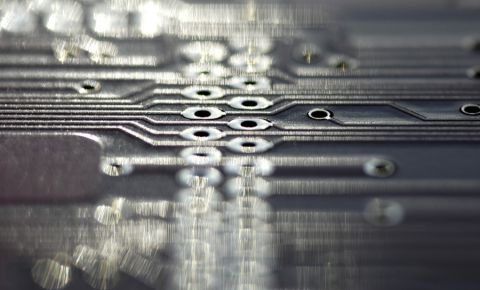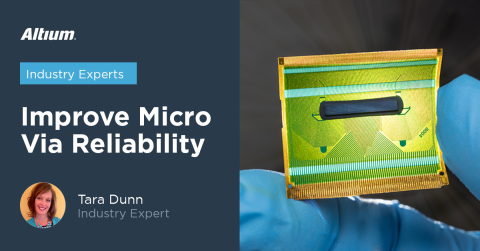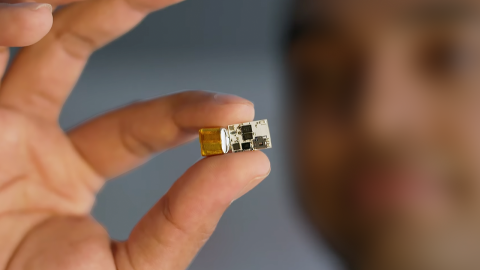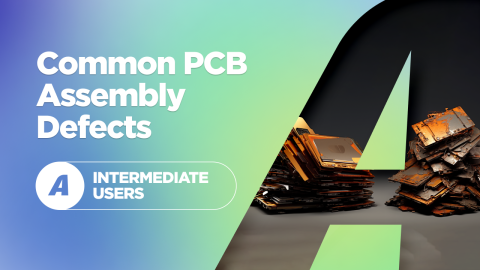The Startup's Guide to PCB Manufacturing

You’ve gone through your prototyping rounds, you’ve performed multiple rounds of functional testing in the field, and your product has passed EMC compliance testing. The next step is to take your prototype and to put it into production, eventually scaling into high volume. What should startups do when they are ready to make this very important step, and how can risk be reduced during this transition?
We always like to say “work with your manufacturer,” but there are some simple design choices and logistical steps that will smooth the transition into production. We’ll outline what you can expect as you transition a prototype into volume production, including production at much higher volume. When it’s time to go to market, you can be prepared to enter production quickly with minimal redesign and optimization effort.
How to Navigate From Low to High Volume
Management of PCB production differs somewhat when producing at low volume compared to high volume. Startups and established companies follow similar processes in this area:
- Startups need to initially produce prototypes at low volume to qualify a design
- Startups need to iterate on initial designs to perfect their product and align with user demands
- Products must later transition into high volume production
- The team needs to manage sourcing and logistics during production
Prototyping
The prototyping process is where many startups excel; they take the time to get good at building their functionality, selecting features for their product, and qualifying vendors. This is the chance to learn from mistakes and eventually perfect the product before scaling into the market.
Prototyping and low-volume production runs differ significantly from volume production runs in many areas, which are summarized below.
|
|
|
|
|
|
|
|
|
|
|
|
|
|
|
|
|
|
|
|
|
Procurement at Volume
In my experience working with startups, one area everyone takes for granted is procurement of components. When you produce a prototype, you probably go to the big US distributors for parts orders. Depending on the number of parts you need to procure, they are a great resource that can help you fill orders and budget for production.
At volume, a different approach will be needed for some of the most critical components. In some cases, you won’t ever be able to procure enough stock from distributors to produce at volume. Instead, you must go directly to parts manufacturers to get periodic parts allocation. Some components where this will be necessary include:
- Most processors (MCUs, FPGAs, etc.)
- Most specialized ASICs without compatible replacements
- Module components (brick power supplies, castellated modules, etc.)
- Inductive components (custom transformers, inductors, etc.)
- Connectors
- Specialty sensors without compatible replacements
If you look through the above list, you’ll see that this comprises most parts except for passives and some discrete semiconductors. These days, as many of these passive and discrete components come back into a state of surplus, they can still be procured from distributors at significant volume, sometimes reaching into ~1 million unit levels for passives.
Two companies I’ve worked with as part of engagements with startups are Microchip and Texas Instruments. They have sales teams who can work with you to get component allocation at significant volume on a monthly basis. Other semiconductor manufacturers can provide allocation as needed so that you can hit monthly or yearly production goals.
Where Should You Produce at Volume?
I am a firm believer that, for low-volume production runs, you should produce locally or you should nearshore production. There are many benefits, most importantly the lack of language barriers and time zone barriers. If you’re in the United States, this might mean nearshoring into Mexico, Canada, or elsewhere in Latin America. Once you’ve produced in these regions, you’re satisfied with the product quality, and you’re ready to scale, you might consider an offshore option in Asia to get to much higher volume.
Can You Produce Overseas?
In some cases, Asian manufacturers may be the only group that can provide the fabrication capabilities needed to produce your design at higher volume. They may exist in the US, but they may not support the volume or cost targets you want to hit. For example, this is the case with very fine line HDI designs and designs requiring additive fabrication.
In some cases, you might be legally prevented from producing overseas without obtaining an export license and working with a licensed EMS company. In the United States, certain products on the US Munitions List (USML), products for military usage, or commercial products that have a dual military use are prohibited from overseas export in part or in full; similar regulations exist in Canada and Europe. In these instances, you are required to work with a local, compliant manufacturer.
Optimize the Qualified Design
Designs that are created as prototypes will seldom look the same once the design is scaled into volume production. Before placing a board into production, there are optimization steps that are typically required. Things like eliminating headers, test points, test circuits, small vias, and unused board space can all be performed as part of optimization. These points also aid cost reduction for the product, something which adds up quickly in high-volume production.
Once you’re ready to prepare your PCB design for scaling into volume production, use the OutJob File feature and the world-class CAD tools in Altium Designer®. To implement collaboration in today’s cross-disciplinary environment, innovative companies are using the Altium 365™ platform to easily share design data and put projects into manufacturing.
We have only scratched the surface of what’s possible with Altium Designer on Altium 365. Start your free trial of Altium Designer + Altium 365 today.











